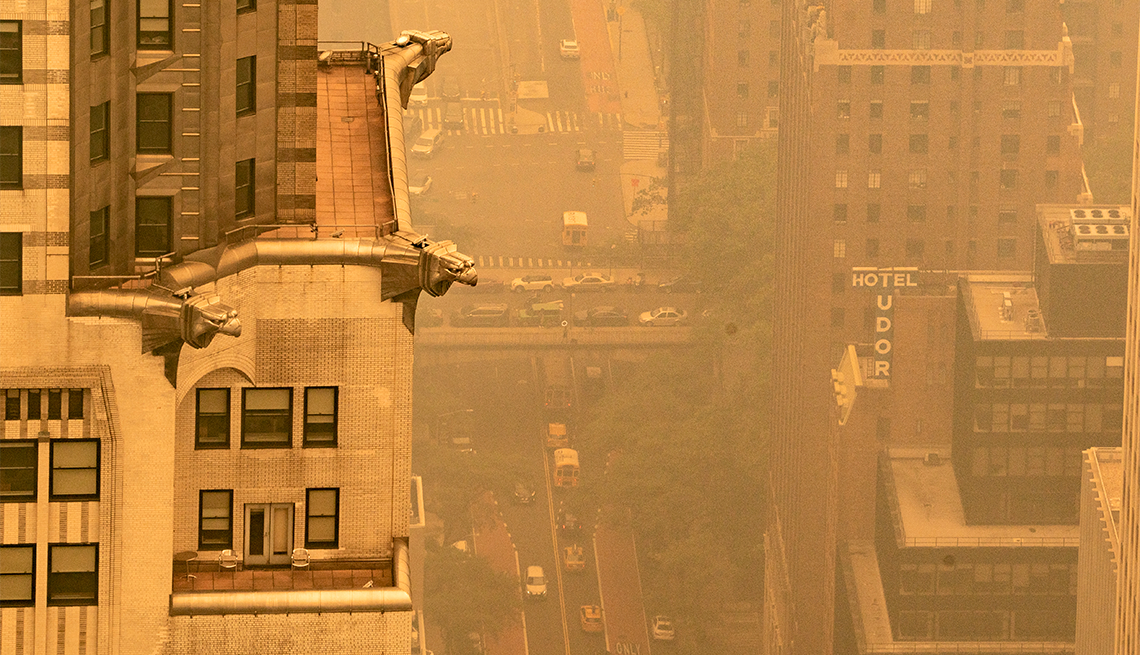
- Select a language for the TTS:
- UK English Female
- UK English Male
- US English Female
- US English Male
- Australian Female
- Australian Male
- Language selected: (auto detect) - EN
Play all audios:
PREVENT MOLD AND MILDEW Lowering the relative humidity in your house is essential to preventing the growth of mold, bacteria and viruses, says Doug Hoffman, 74, executive director of the
National Organization of Remediators and Mold Inspectors (NORMI), a nonprofit in Abita Springs, Louisiana. NORMI educates the public and trains professionals to identify and remove toxic
mold. “Typically, mold, bacteria and viruses thrive in environments where the relative humidity is higher than 60 percent or lower than 40 percent, so stay within that range,” says Hoffman,
who suggests using ventilation fans, vacuuming regularly and making sure you have fresh air coming into the house. For an in-depth look at the humidity environment in your home, a
professional may do swab or aerosol testing, particulate counts, and relative humidity and temperature measurements to create an indoor air quality (IAQ) profile. This can be used to
personalize a home solution if problems are found, explains Hoffman. For a 1,500- to 1,700-square-foot home or condo, expect to pay $600 to $1,200 for a comprehensive analysis. To fix mold
issues, experts usually sanitize to lower the microbial count. That may involve fogging the space and wiping it down, or using air purification technology. In severe cases, remediation —
removing affected materials — might be required. GET RELIEF FROM RADON Radon poses another risk to indoor air quality. This naturally occurring radioactive gas is found in most soil types,
and can move up through the ground into your home through the foundation. When present in large amounts, it’s the second-leading cause of lung cancer, notes Gold. “It’s invisible, odorless
and present in many homes at the lower level,” she says. “You may have more people in your home right now — college kids back from school or an elderly relative — or you’re using your
basement as a work-from-home space.” Radon detectors are inexpensive and can be purchased online or at your local hardware store. Professional radon services, which are often more accurate,
can also evaluate whether there’s radon in your home. David and Daniela Naidu used a radon test and found levels in their apartment were high. Courtesy of the Naidu Family In Boulder,
Colorado, David Naidu, 57, and his wife, Daniela, 54, took advantage of the city’s free radon test kit, and took readings over several days. “We discovered the radon level in our apartment
was high, so our landlord agreed to hire a radon mitigation company,” says Naidu. To reduce the level of radon, the company increased the ventilation of gas below Naidu’s concrete floor,
blowing it out of the apartment through a hole drilled into the wall. The couple are relieved the issue has been resolved, especially since they are also in a wildfire zone. _Editor's
note: This story was originally published on November 10, 2020. It has been updated to reflect new information._ 6 HABITS THAT IMPROVE INDOOR AIR QUALITY * Clean cooking vents regularly so
they work effectively. * Turn ceiling fans on. * Use HEPA filters in your HVAC system and change them every 6 to 12 months. * Wipe down bathroom surfaces after showering. * Remove
shoes and boots at the door to reduce the amount of chemicals and particles brought into the house. * Wipe moisture from windows and sills.







